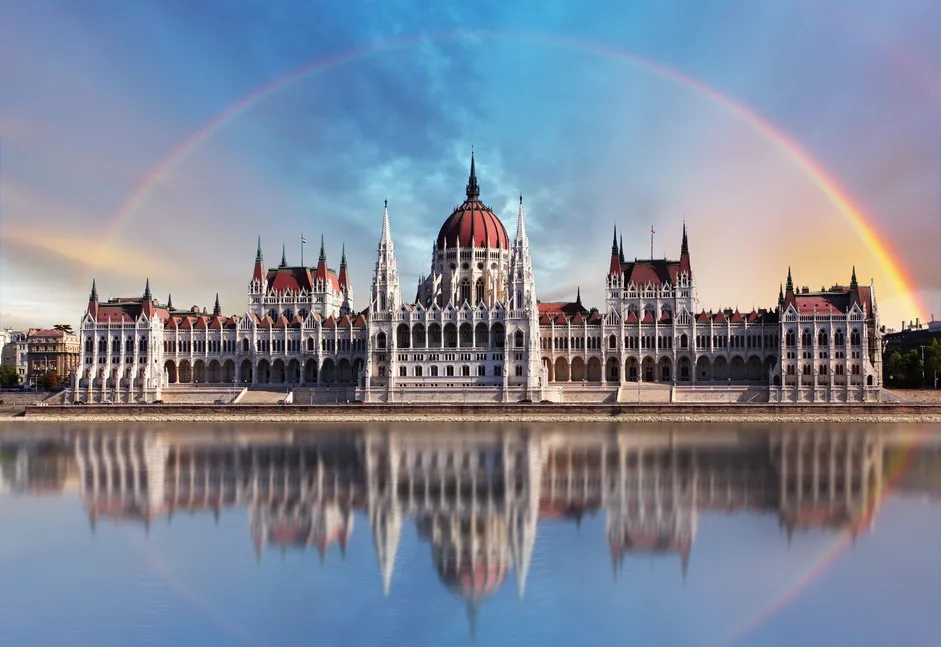Oguz Kaan Kısa · Feb. 1, 2021

About a third (about 5 million) of indigenous Hungarians live outside of Hungary, mostly in Romania but many live in neighboring countries.
The Hungarians set the Guinness World Record for simultaneous kissing while locking the lips of more than 6,400 couples in Budapest's parliament building in 2007.
Hungary's official language is Hungarian. In addition, German and English are widely spoken among both the elderly and the young population. Sometimes French is spoken in the western part of the country.
A song called Gloomy Sunday was composed in 1932 by Rezső Seress, a Hungarian composer and pianist, and the lyrics were written by his poet friend László Jávor.
Of course we don't know for what purpose the composer wrote the song, but the song has been associated with so many suicides that it became known as the "Hungarian Suicide Song".
1986 Hungarian Grand Prix, Formula 1 race held on 10 August 1986 in Hungaroring, Mogyoród. Hungary was 11th in total in the 1986 Formula 1 season. At the same time, this competition became the 2nd Hungarian Grand Prix race in total. This race was held in Eastern Europe and was the first race to be on the F1 calendar. This incident is considered as the "first blow to the Iron Curtain". History: The Formula 1 Grand Prix race was held in Hungary after a long time. The last tournament held in Hungary until this time was the 1936 Hungarian Grand Prix race. That tournament was also the first Hungarian Grand Prix race and was held in Budapest. That is why the 1986 Hungarian Grand Prix race went down in history like the first Formula 1 race in Mogyoród. In fact, this race was planned to be held in Budapest.
896 was determined as the beginning of the Hungarian state. In 1896, the first metro was built in Budapest to celebrate Hungary's millennium anniversary. By law, the tallest buildings in Budapest cannot be taller than 96 meters high, and if the Hungarian national anthem is performed at the proper pace, it takes 96 seconds to sing.
In 1896, the first metro was built in Budapest to celebrate Hungary's millennium anniversary.
Hungarian paper money worth 100,000,000,000,000,000 pengő, the largest ever given on a banknote. Printed in January 1946, this banknote was printed during a period of hyperinflation that doubled every 15 hours.
Hungarian cuisine is known by many as a heavy and fatty cuisine. So we can say that it does not appeal to those who try to keep their weight. An important factor in this is that meals are made with meat and lard. However, it is also an important factor that it encourages the consumption of bread or other similar pastries because many dishes are juicy. In general, it can be said that it is not much different from Turkish cuisine in terms of pastries, bread, hot and spice.
While building the parliament building in Budapest at least 88 lbs. (40 kg) solid gold was used. With 691 rooms, 12.5 miles (20 km) of stairs and 315 feet (96 m) of height, the hotel is Hungary's tallest building. St. Stephen's Basilica. In addition, the world's third largest parliament building consists solely of London's Westminster and the Romanian Parliament Building.
Taxation in Hungary is imposed by both national and local governments. Tax income in Hungary stood at 38.4% of GDP in 2017. The most important sources of income are income tax, social security, corporate tax and value added tax, all of which are applied nationally. Among the total tax revenue, the proportion of local taxes is only 5%, while the EU average is 30%.
The most famous writer Imre Kertesz, who was born in Budapest to a Jewish family in 1929, was sent to Auschwitz Concentration Camp at the age of 15. His experiences here have deeply affected his works. When he was released in 1945 and returned to Hungary, he lost his entire family. He started journalism in 1948 and started working as a freelance writer from 1953. He was influenced by thinkers such as Nietzsche, Freud and Wittgenstein and translated the works of these names. He wrote his masterpiece "Fateless" in ten years. The author, who often takes the Jewish genocide as a theme in his works, won the Nobel Prize by explaining in a very realistic language how humankind can be degraded in Nazi death camps.
With over 1,000 hot springs operating below the surface and more healing spas than any other European country, Hungary is a hot spot for thermal baths. While local people swear by its healing properties, its beauty draws visitors to a far and wide area.
There are eighty underground geothermal spas in Budapest. At the same time, Szechenyi Medikal Termal, which was established in the city that has the largest cave system in the world, is the largest complex in Europe.
Budapest was absent until Pest, Buda and Obuda united in 1873. This decision was also made thanks to a bridge to Danube. Budapest became one city with the official merger of Buda, Pest and Obuda on 17 November 1873. The biggest share in this belongs to Szechenyi lanchid, the Chain Bridge.

 Back
BackLet us find your dream university.
